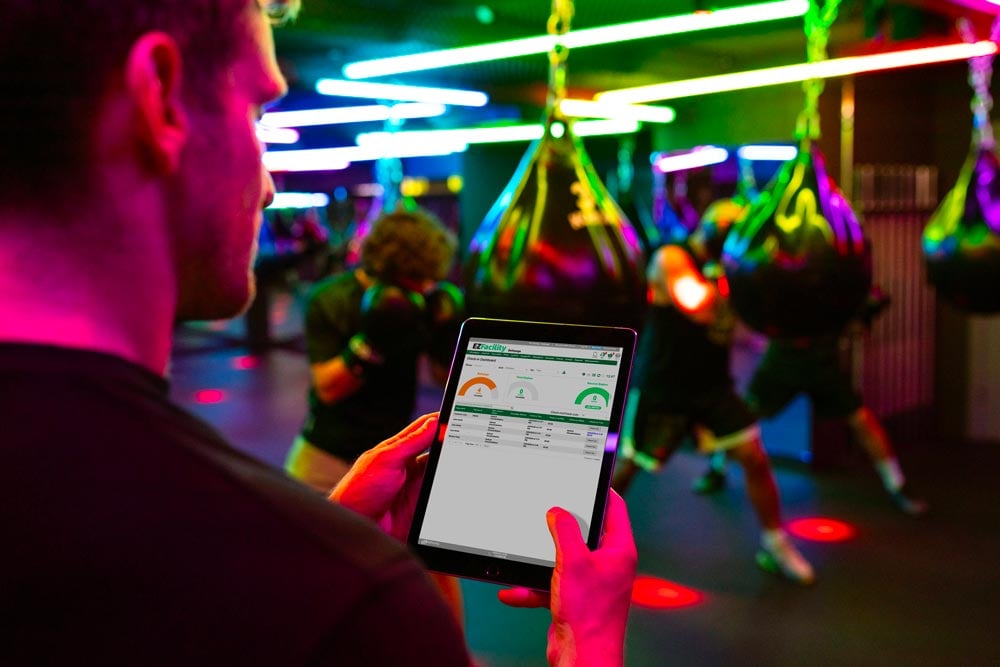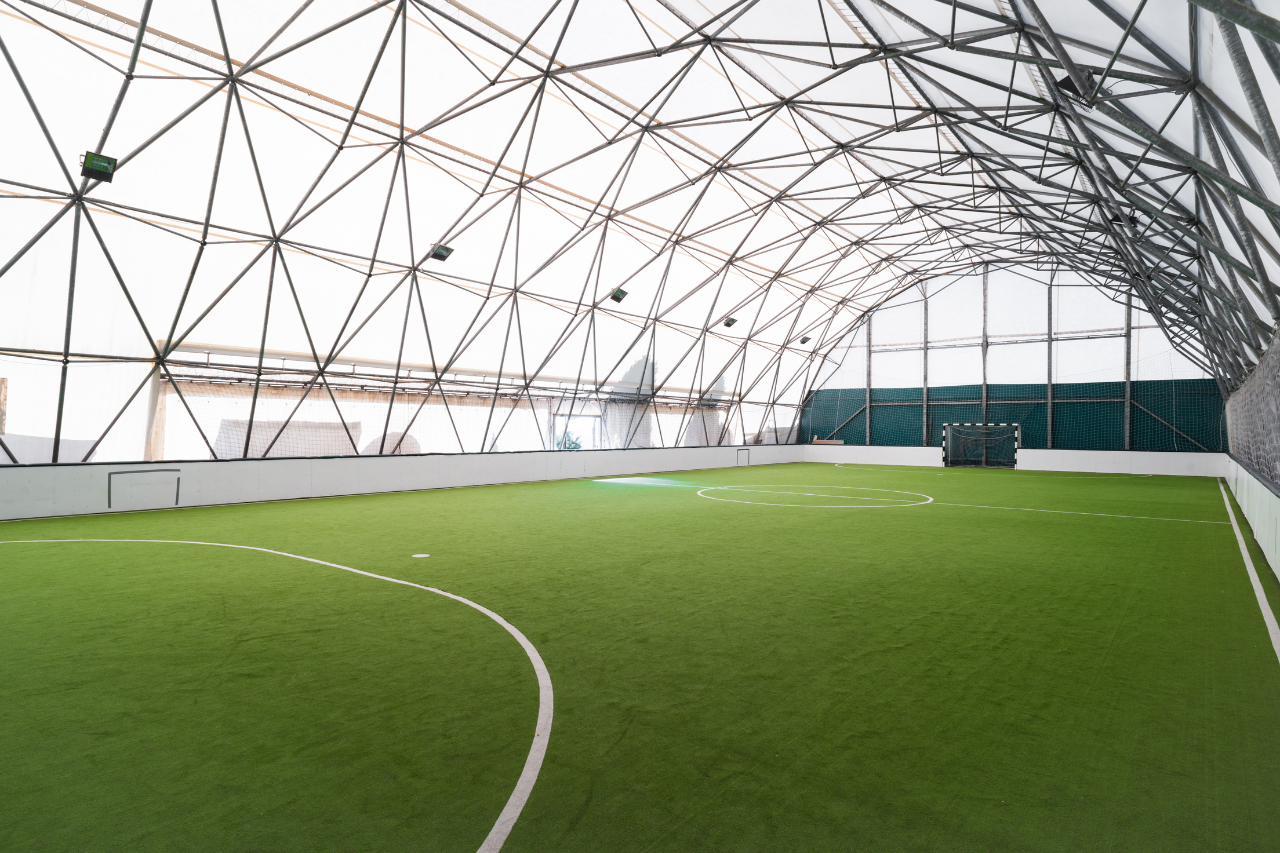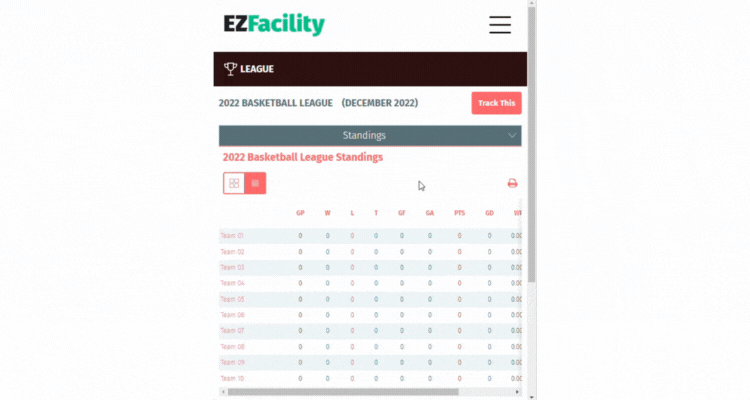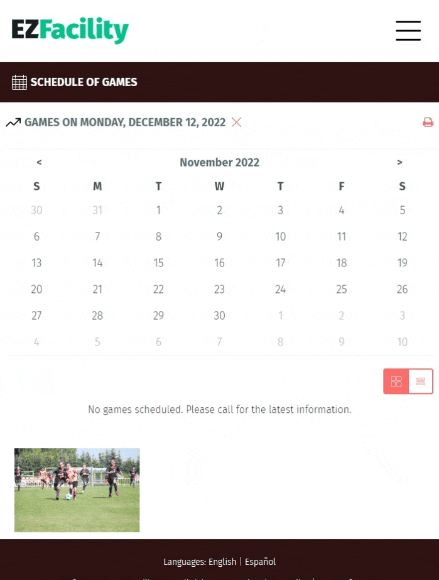Starting your own gym or fitness center is a business venture that not only allows you to pursue your passion for fitness, but also empowers you to make a positive impact on the lives of others.
Whether you’re a fitness enthusiast looking to turn your love for exercise into a business or an entrepreneur seeking an investment opportunity in the thriving fitness industry, we have the information you need.
From finding the perfect location and designing a welcoming space to creating effective marketing strategies and implementing streamlined management solutions, we’ll provide you with fitness business ideas, valuable insights and expert tips to set you up for success.
The Current State of the Fitness Industry and Its Potential for Growth
The fitness industry is thriving, with more and more people realizing the importance of leading a healthy and active lifestyle. This growth presents a tremendous opportunity for aspiring entrepreneurs who dream of owning their own gym or fitness center.
If you’re one of them, you’re in the right place!
In this blog, we will guide you through the essential steps to turn your passion for fitness into a successful business venture.
Reasons Why Owning a Gym Is a Rewarding Experience
Opening a gym can be an incredibly rewarding experience on multiple levels. First and foremost, it gives you the opportunity to pursue your passion for fitness and share it with others.
As a gym owner, you have the power to create a positive and motivating environment where individuals can transform their lives through exercise and healthy habits. Witnessing the progress and achievements of your members can be immensely gratifying, knowing that you played a part in their journey towards improved health and well-being.
Additionally, running a gym allows you to build a tight-knit community, where like-minded individuals come together to support and inspire one another. The satisfaction of creating a space that fosters camaraderie, personal growth, and positive change is truly unparalleled.
Lastly, as a business owner, opening a gym presents opportunities for financial success and personal fulfillment, as you have the chance to build a profitable enterprise doing what you love.
So, if you’re ready to make a lasting impact on people’s lives while pursuing your own dreams, opening a gym can be an incredibly rewarding and fulfilling endeavor.
The Importance of Planning and Preparation
Before diving headfirst into the gym business, careful planning and preparation are paramount. Taking the time to establish a solid foundation will set you up for long-term success. One of the first steps is creating a comprehensive business plan.
When it comes to opening a new gym, preparation and planning are essential ingredients for success. Adequate preparation allows you to lay a solid foundation for your business, ensuring a smooth and efficient launch.
By thoroughly researching and understanding your target market, you can tailor your offerings to meet their specific needs and preferences. Planning enables you to anticipate challenges and develop strategies to overcome them, minimizing potential setbacks.
From securing the right location and acquiring necessary equipment to creating a comprehensive business plan and establishing effective marketing strategies, every aspect requires careful consideration.
Proper planning also helps you set realistic goals, allocate resources effectively, and manage your finances wisely. By investing time and effort into preparation, you set yourself up for a stronger start, increased profitability, and long-term sustainability.
So, remember, when it comes to opening a new gym, preparation and planning are the keys to building a solid foundation for success.
Creating Your Business Plan
Creating a comprehensive business plan is a crucial step when starting a gym or fitness center. Your business plan serves as a roadmap, guiding you through the various stages of your venture. It allows you to define your vision, mission, and goals, while also providing a clear understanding of your target market, competition, and pricing strategy.
Additionally, your business plan helps you determine the optimal organizational structure, staffing needs, and financial projections. It’s a valuable tool for attracting potential investors or securing loans, as it showcases your understanding of the market, potential profitability, and your strategies for growth and sustainability.
So, take the time to carefully craft your business plan, as it will be the foundation upon which your gym’s success is built.
Here are some key components you’ll want to be sure to consider and to include in your business plan::
Defining the Vision and Mission of Your Gym
Crafting a clear vision and mission statement for your gym is crucial. Your vision should encapsulate what you aspire to achieve in the long run, while your mission statement outlines the core values and purpose of your gym. These statements will guide your business strategies and help you build a strong brand.
Choosing the Right Location
When it comes to opening a gym, location is everything. You want to find a spot that is easily accessible, visible, and in close proximity to your target audience. Consider factors such as parking availability, foot traffic, and competition in the area. A prime location will significantly contribute to the success of your gym.
Designing the Right Space and Facility Layout
Creating a welcoming and functional gym space is essential for attracting and retaining members. Carefully plan the layout, ensuring there is enough room for various workout areas, equipment, changing rooms, and amenities. A well-designed facility enhances the overall member experience and sets your gym apart from the competition.
Understanding Financing
Opening and running a gym requires financial investment, so it’s important to understand the costs involved. From equipment purchases to rent, utilities, and staff salaries, it’s crucial to budget accordingly. Additionally, effective budgeting and financial management will help you stay on track and achieve profitability.
Navigating the financial aspects of opening and running a gym or fitness center can be a daunting task. Understanding the costs involved, exploring funding options, and implementing effective budgeting and financial management strategies are crucial for the success of your venture.
In this section, we will delve into these key aspects to provide you with valuable insights and guidance.
Costs of Opening and Running a Gym
Before embarking on your gym business journey, it’s important to have a clear understanding of the costs associated with opening and running a gym. By comprehending these costs upfront, you can better plan and allocate your resources effectively.
Facility Costs
Securing a suitable location for your gym is crucial. You’ll need to consider expenses such as lease or purchase costs, renovations or build-out expenses, utility bills, and maintenance fees.
Assessing the size and condition of the space, as well as its accessibility and amenities, will help you estimate these costs accurately.
Equipment and Furnishings
Equipping your gym with the necessary fitness machines, weights, cardio equipment, and other accessories is a significant investment.
Research the market, compare prices, and create a comprehensive list of equipment you’ll need. Don’t forget to account for delivery and installation costs.
Staffing Expenses
Depending on the scale of your gym, you may need to hire trainers, instructors, front desk staff, and maintenance personnel.
Factor in their salaries, benefits, and potential training costs when budgeting for staffing expenses.
Marketing and Advertising
Promoting your gym is essential for attracting members.
Allocate a portion of your budget for marketing and advertising strategies, such as website development, social media campaigns, local advertising, and promotional materials.
Consider ongoing marketing expenses to sustain member acquisition efforts.
Insurance and Licensing
Protecting your gym and its members with appropriate insurance coverage is crucial.
Budget for liability insurance, property insurance, and worker’s compensation insurance, depending on your location and legal requirements.
Additionally, research and budget for any necessary licenses or permits specific to your gym and local regulations.
Administrative and Operational Costs
Don’t overlook administrative expenses like software subscriptions, membership management systems, accounting services, and legal fees.
These costs ensure smooth operations, efficient member management, and compliance with regulations.
Miscellaneous Expenses
It’s wise to set aside funds for unforeseen or miscellaneous expenses that may arise during the early stages of your gym’s operation.
This can include unexpected repairs, unexpected marketing opportunities, or unexpected regulatory compliance costs.
By thoroughly understanding and budgeting for these costs, you can ensure that you have the necessary financial resources to open and run your gym successfully.
Obtaining Funding Options
When starting a new gym, securing the necessary funding is a crucial step towards turning your vision into reality.
Exploring various funding options can help you find the financial support you need.
Here are some avenues to consider:
Traditional Loans
Traditional bank loans are a common option for gym owners.
By approaching banks or credit unions, you can apply for a loan based on your business plan, creditworthiness, and collateral.
These loans typically offer competitive interest rates and structured repayment terms.
Small Business Administration (SBA) Loans
The U.S. Small Business Administration provides loan programs specifically designed to support small businesses, including gyms and fitness centers.
SBA loans often come with favorable terms, such as lower down payments and longer repayment periods.
Grants
Researching and applying for grants can be a valuable funding option. Various organizations, both public and private, offer grants for entrepreneurs in the fitness industry.
These grants can provide financial assistance without the need for repayment, but they often have specific eligibility criteria and application requirements.
Angel Investors
Angel investors are individuals or groups who provide capital to promising startups in exchange for equity or ownership stakes.
Connecting with angel investors who are interested in the fitness sector can provide not only financial support but also valuable industry expertise and connections.
Crowdfunding
Crowdfunding platforms allow you to raise funds from a large number of people who believe in your gym concept.
By creating a compelling campaign and offering incentives, you can attract backers who contribute varying amounts of money.
Crowdfunding can also help you gauge market interest and build a community around your gym.
Personal Savings or Family and Friends
Funding your gym venture through personal savings or contributions from family and friends is another viable option.
This approach may offer flexibility and fewer formalities, but it’s important to establish clear expectations and repayment terms to maintain healthy relationships.
Remember, each funding option has its own advantages and considerations. It’s crucial to carefully evaluate your financial needs, business goals, and risk tolerance before deciding on the best funding approach for your new gym.
By understanding the diverse range of funding sources, you’ll be equipped to choose the one that aligns best with your goals and financial situation.
Budgeting and Financial Management
As a new gym owner, implementing effective budgeting and financial management practices is crucial for the long-term success and sustainability of your business.
Here’s why it matters:
Financial Stability
Budgeting allows you to gain a clear understanding of your gym’s income and expenses.
By creating a detailed budget, you can identify potential financial pitfalls, allocate resources wisely, and ensure that your gym operates within its means.
This helps to maintain financial stability and avoid unnecessary debt or cash flow issues.
Profitability and Growth
A well-planned budget not only helps you cover your expenses but also provides insights into revenue streams and potential gym profit margins.
By monitoring and analyzing financial data, you can identify areas where you can optimize revenue and reduce costs, ultimately contributing to the profitability and growth of your gym.
Investment and Expansion Opportunities
Budgeting and financial management enable you to plan for future investments and expansion.
By accurately tracking your financial performance, you can identify when it’s feasible to invest in new equipment, expand your facility, or introduce additional services.
Having a solid financial foundation allows you to seize growth opportunities when they arise.
Financial Decision-Making
When you have a clear understanding of your gym’s financial health, you can make informed decisions regarding pricing, marketing campaigns, staff hiring, and other critical aspects.
Budgeting and financial management provide you with the necessary data and insights to evaluate the potential impact of such decisions on your bottom line.
Risk Mitigation
Running a gym comes with inherent risks, and financial management plays a significant role in mitigating those risks.
By maintaining accurate financial records, implementing internal controls, and regularly reviewing financial performance, you can identify potential issues early on and take corrective measures to protect your business.
Tax Compliance and Reporting
Proper budgeting and financial management also ensure that you meet your tax obligations and reporting requirements.
By keeping organized financial records, tracking expenses, and understanding tax regulations specific to the fitness industry, you can minimize the chances of errors, penalties, and audits.
Implementing effective budgeting and financial management practices may seem daunting, but it’s a critical aspect of running a successful gym.
Utilizing the capabilities of gym and facility management software can make a huge difference to the success of your facility by streamlining financial management, reducing errors, and maximizing your gym’s financial performance.
Create a Memorable Member Experience
To stand out in the competitive fitness industry, you need to create a gym experience that members will love and remember.
Here are some key elements to consider when figuring out how to create a memorable member experience:
Develop a Brand Identity
Crafting a strong brand identity will help your gym establish a unique and recognizable image.
Consider your gym’s values, target audience, and the overall atmosphere you want to create.
From the logo and colors to the tone of voice in your marketing materials, every aspect should align with your brand identity.
Offering Diverse and Engaging Programs and Amenities
To cater to a wide range of fitness enthusiasts, offer a variety of programs and amenities. From group fitness classes to personal training, ensure there’s something for everyone.
Additionally, consider incorporating amenities like saunas, juice bars, or childcare services to enhance the overall member experience.
Maintain a Clean and Safe Environment
A clean and safe gym environment is non-negotiable.
Regularly clean and sanitize all equipment, locker rooms, and common areas.
Implement safety protocols and provide proper training to your staff to ensure that members feel secure and supported during their workouts.
Technology Integration
Incorporating technology into your gym operations can streamline processes and enhance member satisfaction.
Consider implementing gym management software, mobile apps for class bookings, and wearable fitness trackers to provide a seamless and convenient experience for your members.
Implementing Effective Marketing Strategies
Once your gym is up and running, it’s crucial to implement effective marketing strategies to attract new members and build a strong community. Here are a few key elements to focus on:
Creating a Marketing Plan that aligns with your brand
Develop a comprehensive marketing plan that aligns with your gym’s brand identity and target audience. Identify the most effective marketing channels, such as social media, local advertising, or partnerships with local businesses, to reach potential members.
Create a strong online presence
In today’s digital age, having a strong online presence is essential. Build a professional website that showcases your gym’s offerings, features testimonials, and provides easy access to membership information.
Leverage social media platforms to engage with your audience, share valuable content, and promote your gym’s unique selling points.
Website
A well-designed and user-friendly website is essential for your gym’s online presence. It should showcase your services, class schedules, membership options, and contact information.
Make sure your website is optimized for mobile devices to cater to the growing number of users accessing information on the go.
Social Media
Social media platforms offer a powerful way to connect with your target audience, build brand awareness, and engage with potential and existing members.
Identify the platforms that resonate most with your target demographic and create compelling content that showcases your gym’s unique offerings.
Encourage members to share their experiences and success stories on social media, utilizing user-generated content to promote your gym.
Leveraging Referrals and Testimonials from Existing Members
Word-of-mouth is a powerful tool for attracting new members. Encourage your existing members to refer friends, family, and colleagues to your gym by offering incentives or rewards.
Additionally, collect testimonials and success stories from satisfied members to showcase on your website and social media platforms.
Genuine testimonials can build trust and credibility, making potential members more likely to join.
Navigating Legal and Regulatory Requirements
Before opening your gym, it’s crucial to familiarize yourself with the legal and regulatory requirements specific to the fitness industry.
Understand the legal and regulatory requirements for operating a gym
This may include obtaining the necessary permits and licenses, complying with zoning regulations, and adhering to employment and tax laws.
Consult with a legal professional to ensure you meet all the necessary requirements.
Ensuring compliance with safety and health regulations
As a gym owner, the safety and well-being of your members should be a top priority.
Familiarize yourself with safety and health regulations specific to gyms, such as proper equipment maintenance, emergency protocols, and cleanliness standards.
Regularly inspect and maintain your facility to ensure compliance and minimize the risk of accidents or injuries.
Managing Risk and Liability
Operating a gym comes with inherent risks, so it’s important to have proper risk management strategies in place. This may include obtaining liability insurance to protect your business in case of accidents or injuries.
Additionally, implementing thorough safety protocols, providing staff training, and having clear membership agreements can also help mitigate potential risks.
Conclusion
Congratulations! You’ve learned about the essential steps to starting your own gym or fitness center.
Remember, opening a gym requires dedication, hard work, and a passion for helping others achieve their fitness goals.
With careful planning, coupled with the right tools and software, your gym can become a thriving hub for health and wellness in your community. Want to learn more about how we can help? Try EZfacility for free today.


























